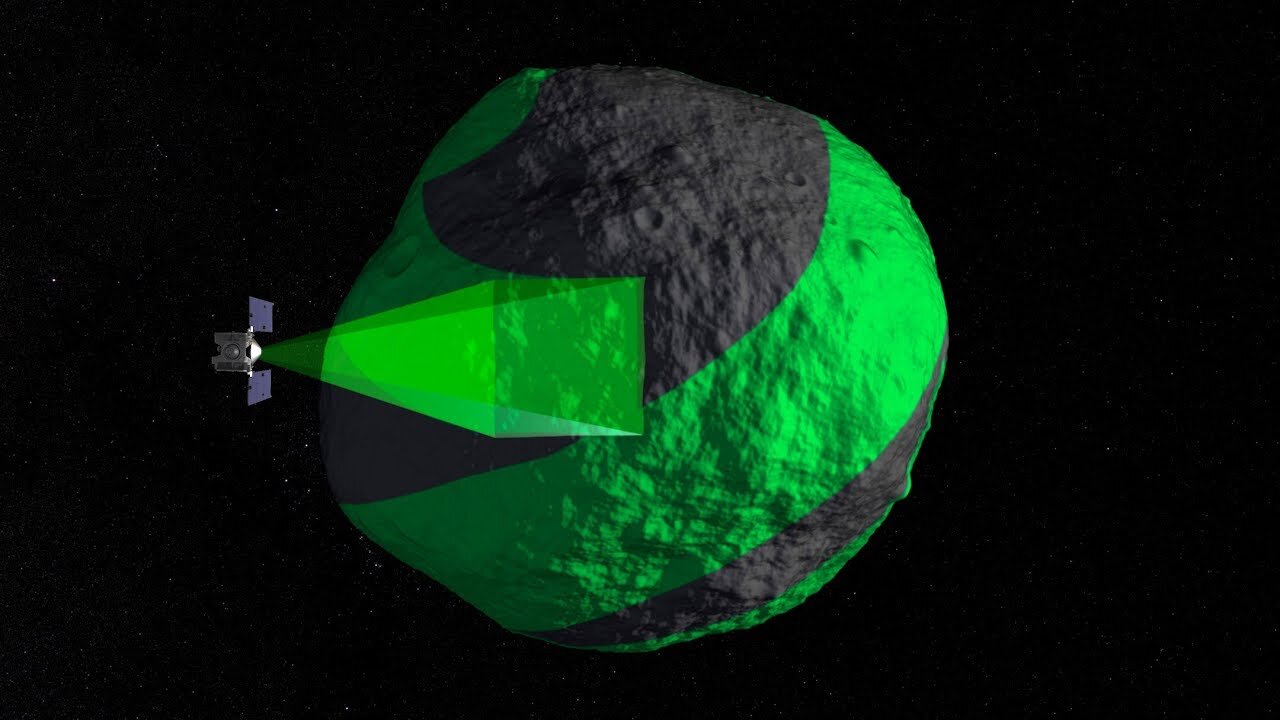Premium Only Content

The OSIRIS-REx mission reached Bennu //dxbduba1
NASA's OSIRIS-REx (Origins, Spectral Interpretation, Resource Identification, Security, Regolith Explorer) mission was a spacecraft mission launched in 2016 with the goal of studying and collecting samples from the near-Earth asteroid Bennu. The mission had several key objectives:
Sample Collection: OSIRIS-REx was designed to approach Bennu, study it in detail, and collect a sample of regolith (loose surface material) from the asteroid. This material would provide valuable insights into the composition and history of Bennu and its potential as a resource for future space exploration.
Return to Earth: After collecting the sample, OSIRIS-REx was intended to return to Earth with the precious cargo. The sample capsule was designed to re-enter Earth's atmosphere and land in a remote area in Utah, where scientists could retrieve and study the samples.
Asteroid Characterization: The spacecraft was equipped with a suite of instruments to study Bennu's size, shape, rotation, composition, and spectral properties. This information was expected to help scientists understand the formation and evolution of asteroids and their role in the early solar system.
Impact Hazard Assessment: Bennu is classified as a potentially hazardous asteroid, which means it had a small chance of impacting Earth in the late 22nd century. OSIRIS-REx's data collection aimed to improve our understanding of the Yarkovsky effect (a non-gravitational force that affects asteroid orbits) and refine Bennu's orbit predictions to assess its long-term impact risk.
Spacecraft Operations and Technology: The mission provided valuable experience in spacecraft operations, autonomous navigation, and sample collection, which could inform future asteroid missions and deep space exploration efforts.
The OSIRIS-REx mission reached Bennu in December 2018, spent several years surveying the asteroid, and successfully collected a sample from its surface in October 2020. The sample return capsule containing the asteroid material safely landed on Earth in September 2023, completing the primary mission objectives.
The samples collected from Bennu are expected to provide valuable insights into the early solar system's composition, the origins of water and life-building compounds on Earth, and the behavior of near-Earth asteroids. Scientists will analyze these samples in laboratories around the world to answer fundamental questions about our solar system's history and the potential for asteroid resources.
-
 9:34
9:34
ariellescarcella
12 hours ago"Born This Way Is A Lie" : Religious Debate
19.2K8 -
![🔴[LIVE TRADING] Time To Buy The Stock Market Dip?! || The MK Show](https://1a-1791.com/video/fwe1/31/s8/1/K/O/5/p/KO5py.0kob-small-The-MK-Show-Mar.-6th.jpg) LIVE
LIVE
Matt Kohrs
8 hours ago🔴[LIVE TRADING] Time To Buy The Stock Market Dip?! || The MK Show
871 watching -
 LIVE
LIVE
BonginoReport
2 hours agoJoe Rogan Brings Back Pizzagate (Ep.154) - 03/06/2025
14,703 watching -
 LIVE
LIVE
Wendy Bell Radio
5 hours agoStranded & Abandoned By The Democrat Party
9,446 watching -
 6:05:13
6:05:13
Akademiks
17 hours agoDay 1/30. Drake Drops lawsuit vs iHeartMedia? Offset and Cardi Calls it Quits. 50 v Jim Jones?
205K12 -
 2:55:11
2:55:11
TimcastIRL
13 hours agoDemocrat TANTRUM At Trump Speech BACKFIRES, Trump Polls UP, Dems UNDER FIRE w/67Kevin | Timcast IRL
175K78 -
 1:25:23
1:25:23
Kim Iversen
15 hours agoFrom Doctor to Political Prisoner: Dr. Simone Gold on COVID Lies, January 6th, and Medical Tyranny
139K89 -
 2:09:28
2:09:28
Melonie Mac
17 hours agoGo Boom Live Ep 39!
91.9K15 -
 1:04:36
1:04:36
Man in America
19 hours ago🚨 BREAKING: Dr. Robert Young JAILED! Medical Tyrants Will Do ANYTHING to Silence Truth
112K28 -
 3:01:44
3:01:44
I_Came_With_Fire_Podcast
17 hours agoPanama CANAL BlackROCKED | Left of PODCASTING | Ukraine AID GONE
60.4K10